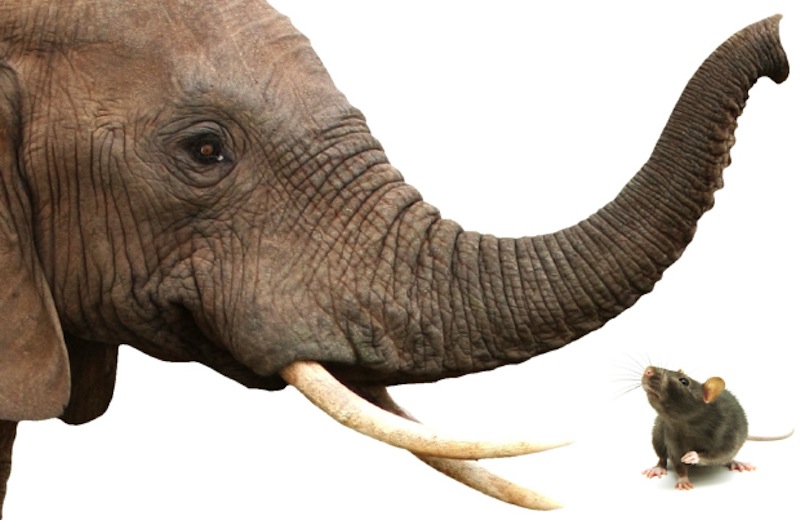Elephants Can Outsniff Rats and Dogs

This story was updated July 23 at 2:01 p.m. EDT.
Elephants are known for their impressively long trunks, but perhaps less well known is the large number of genes that code for their sense smell.
In a study of 13 mammals, African elephants were found to be superior sniffers, possessing the largest number of genes associated with smell — five times as many as humans and more than twice that of dogs.
"Rats had the record for the largest number of [these] genes," said the study's lead researcher Yoshiihito Niimura, a researcher of molecular evolution at The University of Tokyo in Japan. "Elephants have much more. It's almost double, so it's very surprising." [Infographic: Elephants Crowned Top Smellers Among Selected Mammals]
The findings support other research on the pachyderm's superior sense of smell. African elephants can smell the difference between two tribes living in Kenya: the Maasai, whose young men prove their virility by spearing elephants, and the Kamba, farmers who usually leave elephants alone, reported a 2007 study published in the journal Current Biology.
Elephants also use their sensitive sense of smell to forage for food and identify family members. Female African elephants are only able reproduce for a few days every three years, and research suggests that males can smell when a female is receptive to reproduction, said Bruce Schulte, head of the department of biology at Western Kentucky University in Bowling Green, who was not involved in the study.
"When you watch the animal, even in captivity, the trunk is constantly moving. It's constantly checking out the environment," Schulte told Live Science.
Get the world’s most fascinating discoveries delivered straight to your inbox.
In the study, the researchers looked at the number of olfactory receptor genes in each mammal. These genes code proteins that reside in the nasal cavity and bind to odor molecules. Nerve cells then relay the information to the brain, which classifies the smell.
The number of olfactory receptor genes ranged from 296 in orangutans to 1,948 in African elephants, the researchers found. An analysis showed that the common ancestor of all 13 mammals had 781 such genes. This indicates that the number of olfactory receptor genes has increased over time in elephants and rodents, while it has decreased in primates, including humans who have 396 such receptor genes.
Genes increase through gene duplication, when one gene becomes two, for example after an error in DNA replication, Niimura said. When this happens, each gene can acquire different mutations, and the genes eventually become distinct from one another. Individuals can also lose genes if mutations render them useless.
The primates in the study lost more than half of their olfactory receptor genes. Most notably, orangutans lost about 70 percent since the common ancestor lived about 100 million years ago.
"This study is a great step towards the identification of genes related to olfaction stemming from the increasing number of sequenced mammalian genomes," said Sergios-Orestis Kolokotronis, an assistant professor of biology at Fordham University in New York City, who was not involved in the study.
The study researchers did not examine the function of each gene, but the vast number of olfactory receptor genes in the African elephant suggests that its trunk has profound smelling abilities.
"It's extremely sensitive," Schulte said. "They really do follow their nose."
The study was published today (July 22) in the journal Genome Research.
Editor's Note: This story was updated to correct Sergios-Orestis Kolokotronis' affiliation.
Follow Laura Geggel on Twitter @LauraGeggel and Google+. Follow Live Science @livescience, Facebook & Google+. Original article on Live Science.

Laura is the archaeology and Life's Little Mysteries editor at Live Science. She also reports on general science, including paleontology. Her work has appeared in The New York Times, Scholastic, Popular Science and Spectrum, a site on autism research. She has won multiple awards from the Society of Professional Journalists and the Washington Newspaper Publishers Association for her reporting at a weekly newspaper near Seattle. Laura holds a bachelor's degree in English literature and psychology from Washington University in St. Louis and a master's degree in science writing from NYU.
